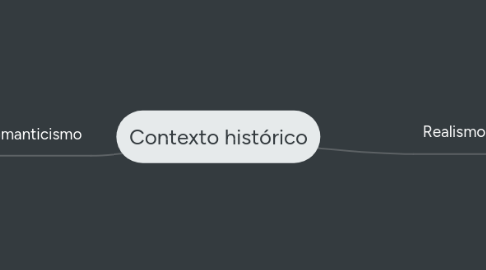
1. Realismo
1.1. Se produce en la segunda mitad del siglo XIX.
1.2. La primera república fracasó, Alfonso XII subió al trono y la burguesía se afianzó en el poder social.
1.3. Se produce en el contexto de la revolución industrial
1.4. Ocurre junto a la aparición de los primeros movimientos obreros y los sindicatos.
1.5. Sucede en un momento de fracaso republicano y para ciertas clases sociales.
1.6. Naturalismo
1.6.1. Ocurre en el mismo pedido histórico que el realismo.
1.6.1.1. Situational Analysis / Drivers
1.6.1.1.1. What is driving us to do this?
1.6.1.1.2. SWOT Analysis
1.6.1.1.3. Customer Findings - What have we learned from customers?
1.6.1.2. Competitive Analysis
1.6.1.2.1. Do we have competitors and threats in these target markets with the proposed offerings?
1.6.1.2.2. What are our competitors doing and how are they positioning?
1.6.1.2.3. How do we position against each competitor?
1.6.1.3. Target Customer(s)
1.6.1.3.1. Buyer Profile
1.6.1.3.2. Influencer Profile
1.6.1.3.3. User Profile
1.6.1.3.4. What do customers want and need?
1.6.1.3.5. What business problems do each of these customers have?
1.6.1.4. Customer Segmentation
1.6.1.4.1. Which customers or sets of customers do we sell to?
1.6.1.4.2. What are the target market segments that we want to go after?
1.6.1.4.3. What are the distinct problems for each segment of the market?
1.6.1.5. Total Available Market
1.6.1.5.1. New Prospects
1.6.1.5.2. Existing Customers
1.6.2. Sigue las corrientes del positivismo y el método experimental de esa época.
1.6.2.1. Service Offer
1.6.2.1.1. What are we selling?
1.6.2.1.2. Product Definition
1.6.2.1.3. Pricing
1.6.2.1.4. Packaging
1.6.2.1.5. Positioning
1.6.2.2. Value Proposition
1.6.2.2.1. What is the Value Proposition to the Customer?
1.6.2.2.2. What pain are we solving?
1.6.3. Los avances científicos de la época hacen que los autores quieran probar el método científico en la literatura.
1.6.3.1. Revenue Forecasts
1.6.3.1.1. Revenue and P&L Forecast (5 Years)
1.6.3.1.2. Revenue should be split out quarterly
1.6.3.2. Cost Analysis
1.6.3.2.1. Should include a description of the costs in entering this business and profitability analysis
1.6.3.3. Profitability Analysis
1.6.3.3.1. P&L for the offer to include gross margin, net income and break even analysis.
1.6.4. Es el momento en que los naturalistas perciben una nueva forma de entender el mundo.
1.6.4.1. Sales Strategy
1.6.4.1.1. Direct Sales Strategy
1.6.4.1.2. Inside Sales Strategy
1.6.4.1.3. Channel Sales Strategy
1.6.4.2. Partner Strategy
1.6.4.2.1. Channel Strategy
1.6.4.2.2. Technology Partnerships
1.6.4.2.3. Solutions Partners
2. Romanticismo
2.1. Primera parte del siglo XIX.
2.1.1. This document describes our Go To Market Plan for <Product Name>.
2.2. Coincide con la revolución francesa y una crisis del ser humano, los autores viajan a sitios exóticos.
2.3. Coincide también con la invasión Napoleónica en España y el levantamiento castellano contra el gobierno del francés.
2.4. Se estableció realmente con el reinado de Isabel II.
2.5. Con el reinado de Fernando VII, en cambio, se cerraron universidades y muchos de los autores debieron exiliarse debido a haber tomado condición de afrancesados.
2.6. Tuvo su máximo auge con la vuelta de los exiliados después de redescubrir el movimiento en Europa.
2.6.1. Training
2.6.2. Channels
2.6.3. International
2.6.4. Public Sector
2.6.5. Sales
2.6.6. Marketing Communications
2.6.7. Product Management

